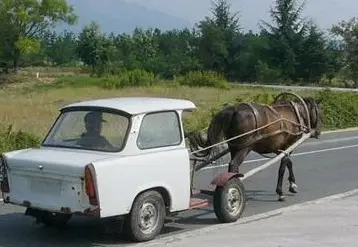Rideshare services have revolutionized urban transportation, offering convenience, efficiency, and an alternative to traditional taxi services. However, their impact in rural areas, characterized by low population density and limited transportation infrastructure, is less discussed. This article explores how rideshare companies are adapting to meet the unique challenges of rural communities, where traditional taxi services may be scarce or entirely absent.
Challenges in Rural Ridesharing
- Low Population Density: Rural areas often have fewer potential riders and drivers, making it less economically viable for rideshare services to operate.
- Longer Distances: Trips in rural areas can cover long distances, leading to higher costs and extended travel times.
- Limited Internet and Cellular Access: Reliable internet and cellular networks, crucial for app-based rideshare services, are often lacking in rural regions.
- Economic Factors: Rural communities may have lower average incomes, impacting the affordability of rideshare services.
Adaptation Strategies
Despite these challenges, rideshare companies and communities are finding innovative ways to make ridesharing feasible in rural areas.
1. Community-Based Models
Some rural areas are adopting community-based rideshare models. These involve local drivers providing rides to neighbors, supported by local governments or community organizations. These models can operate on a volunteer basis or with nominal fees, ensuring affordability.
In some areas, local initiatives like the “Feonix – Mobility Rising” program in Nebraska provide a mix of volunteer drivers and paid services to cater to the needs of rural residents. This program highlights the importance of community involvement and localized solutions.
2. Partnerships with Local Governments
Rideshare companies are partnering with local governments to subsidize rideshare services. These partnerships can provide financial support, making it economically viable for drivers and affordable for riders. Government-subsidized programs can help fill the transportation gaps left by the absence of public transit and traditional taxis.
3. Flexible Scheduling
To address the issue of low demand, rideshare companies are implementing flexible scheduling. Drivers can sign up for specific time slots or respond to ride requests in advance, ensuring that both drivers and passengers can plan their schedules effectively. In some small towns, one person will sign up to be an Uber driver and will post on their community pages the hours they will be signed on and active in the Uber app. If a rider needs a ride outside of those hours they will have to contact the driver separately.
4. Enhancing Driver Recruitment
Rideshare companies are actively recruiting drivers in rural areas by offering incentives such as sign-up bonuses and guaranteed minimum earnings. By making it more attractive for locals to become drivers, companies can increase the availability of rideshare services.
5. Technology and Infrastructure Improvements
Efforts to expand internet and cellular coverage in rural areas are critical. Rideshare companies are also exploring partnerships with tech companies to improve connectivity and ensure their apps function reliably in these regions.
Uber and Lyft have initiated pilot programs in rural areas to understand and address the unique challenges. For instance, Uber has partnered with local healthcare providers to offer rides to medical appointments in underserved areas. Lyft’s “Access Alliance” program collaborates with local agencies to provide transportation for essential services.
Rideshare services in rural areas face significant challenges but are adapting through innovative models and partnerships. By leveraging community resources, enhancing driver recruitment, and improving technological infrastructure, rideshare companies are beginning to provide viable transportation solutions in low-density regions. These efforts not only enhance mobility for rural residents but also contribute to the overall connectivity and economic vitality of rural communities. As these models evolve, they hold the promise of making reliable transportation accessible to all, regardless of geography.

